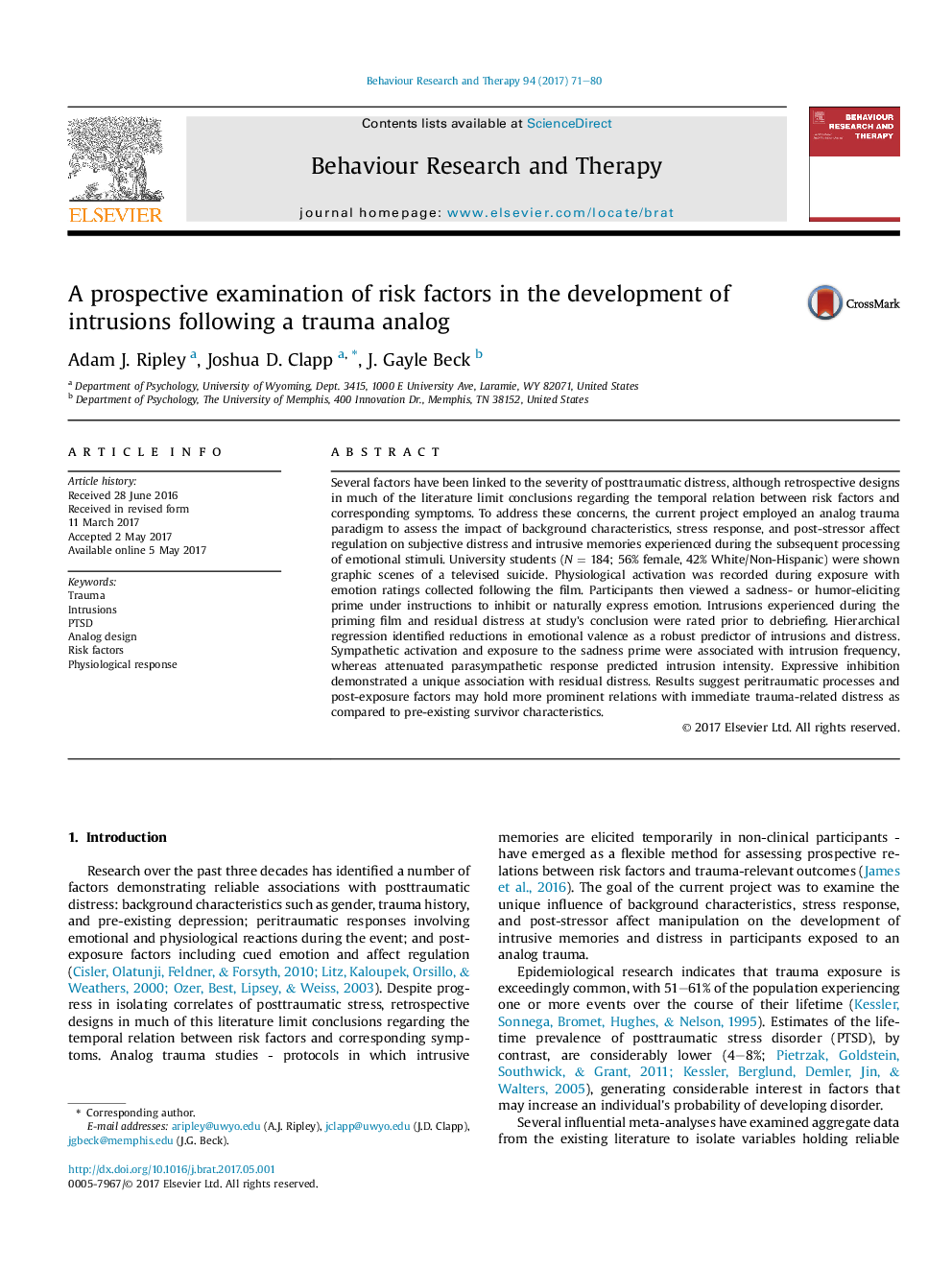| کد مقاله | کد نشریه | سال انتشار | مقاله انگلیسی | نسخه تمام متن |
|---|---|---|---|---|
| 5038236 | 1472755 | 2017 | 10 صفحه PDF | دانلود رایگان |
- Data examine factors related to risk for analog intrusions and distress.
- Peritraumatic emotion predicts intrusion frequency, intensity, and distress.
- Physiological reactivity predicts intrusion frequency and intensity.
- Affective priming and regulation predict intrusion frequency and distress.
Several factors have been linked to the severity of posttraumatic distress, although retrospective designs in much of the literature limit conclusions regarding the temporal relation between risk factors and corresponding symptoms. To address these concerns, the current project employed an analog trauma paradigm to assess the impact of background characteristics, stress response, and post-stressor affect regulation on subjective distress and intrusive memories experienced during the subsequent processing of emotional stimuli. University students (NÂ =Â 184; 56% female, 42% White/Non-Hispanic) were shown graphic scenes of a televised suicide. Physiological activation was recorded during exposure with emotion ratings collected following the film. Participants then viewed a sadness- or humor-eliciting prime under instructions to inhibit or naturally express emotion. Intrusions experienced during the priming film and residual distress at study's conclusion were rated prior to debriefing. Hierarchical regression identified reductions in emotional valence as a robust predictor of intrusions and distress. Sympathetic activation and exposure to the sadness prime were associated with intrusion frequency, whereas attenuated parasympathetic response predicted intrusion intensity. Expressive inhibition demonstrated a unique association with residual distress. Results suggest peritraumatic processes and post-exposure factors may hold more prominent relations with immediate trauma-related distress as compared to pre-existing survivor characteristics.
Journal: Behaviour Research and Therapy - Volume 94, July 2017, Pages 71-80
